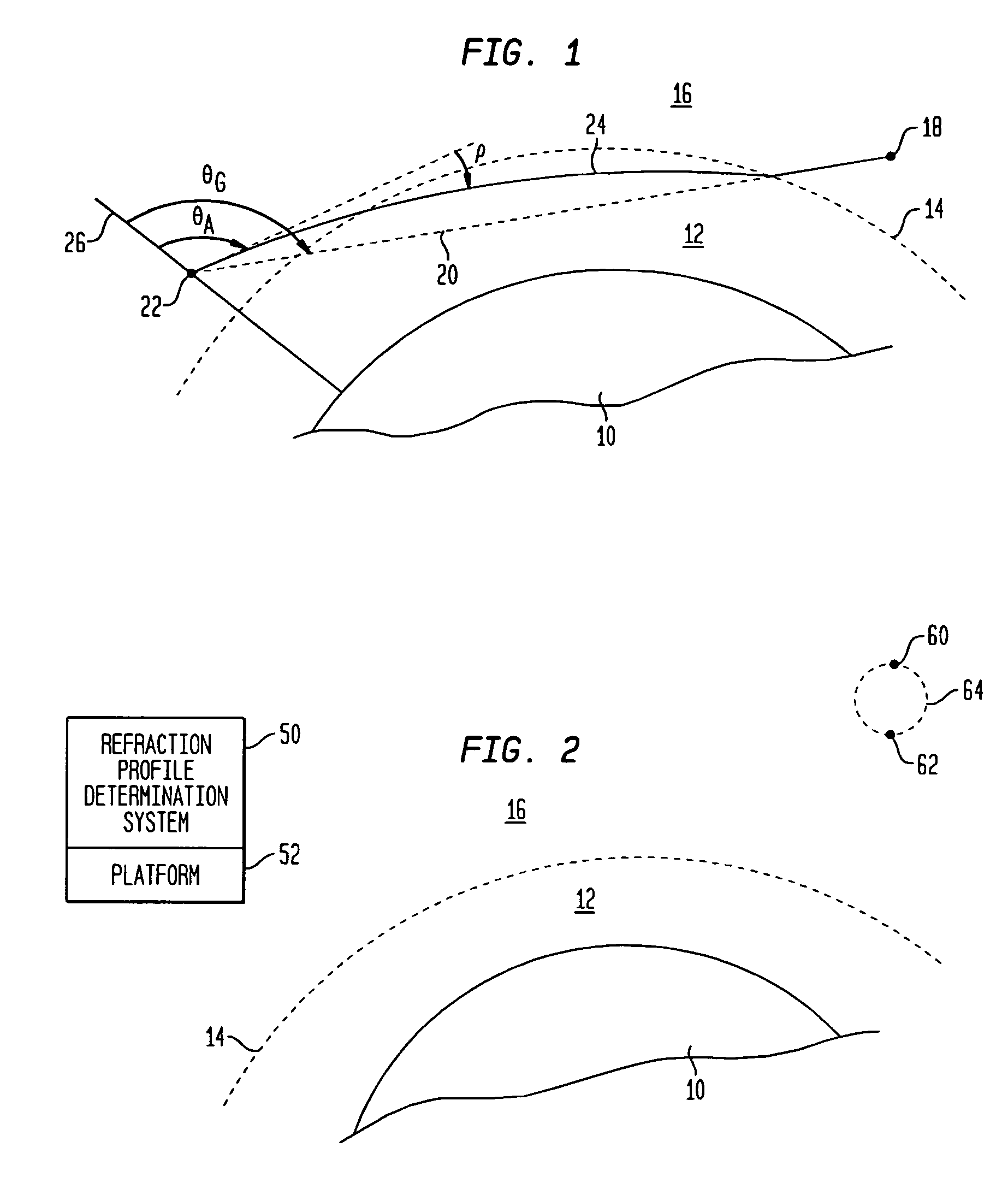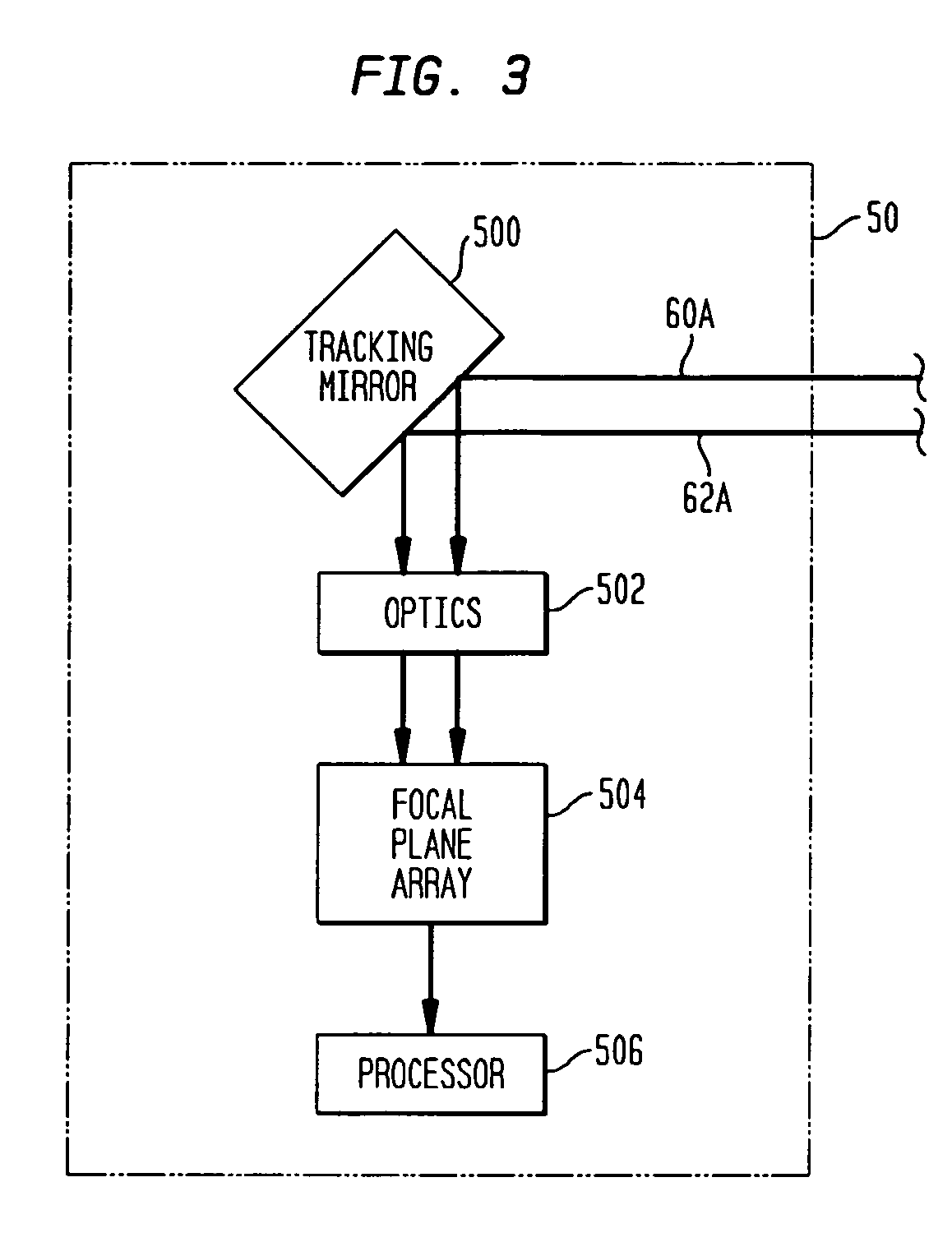Method of determining atmospheric refraction profile using two spatially separated light sources
a spatial separation and light source technology, applied in distance measurement, height/levelling measurement, instruments, etc., can solve the problems of affecting the precision of a determined extinction profile, difficult to know a concentration profile with a great deal of precision, and difficult to control/measure the motion of satellites or spacecrafts with sufficient precision
- Summary
- Abstract
- Description
- Claims
- Application Information
AI Technical Summary
Benefits of technology
Problems solved by technology
Method used
Image
Examples
Embodiment Construction
[0016]Prior to describing the method and system of the present invention, a brief description of refraction geometry associated with light passing through an atmosphere will be provided herein. By way of example, the earth and its refractive atmosphere will be discussed. However, it is to be understood that the same refraction geometry principles apply to any atmosphere and that the method and system of the present invention can be used to determine the refraction profile of any atmosphere, which, in turn, can be used to determine the atmosphere's temperature / pressure profile.
[0017]Referring now to the drawings, and more particularly to FIG. 1, the earth is referenced by numeral 10 and the earth's refractive atmosphere 12 lies between earth 10 and the dashed line referenced by numeral 14. As is known in the art, the earth's refractive atmosphere 12 is that portion of the earth's atmosphere that will cause a light beam to bend or refract as it passes therethrough. Accordingly, points...
PUM
 Login to View More
Login to View More Abstract
Description
Claims
Application Information
 Login to View More
Login to View More - R&D
- Intellectual Property
- Life Sciences
- Materials
- Tech Scout
- Unparalleled Data Quality
- Higher Quality Content
- 60% Fewer Hallucinations
Browse by: Latest US Patents, China's latest patents, Technical Efficacy Thesaurus, Application Domain, Technology Topic, Popular Technical Reports.
© 2025 PatSnap. All rights reserved.Legal|Privacy policy|Modern Slavery Act Transparency Statement|Sitemap|About US| Contact US: help@patsnap.com



